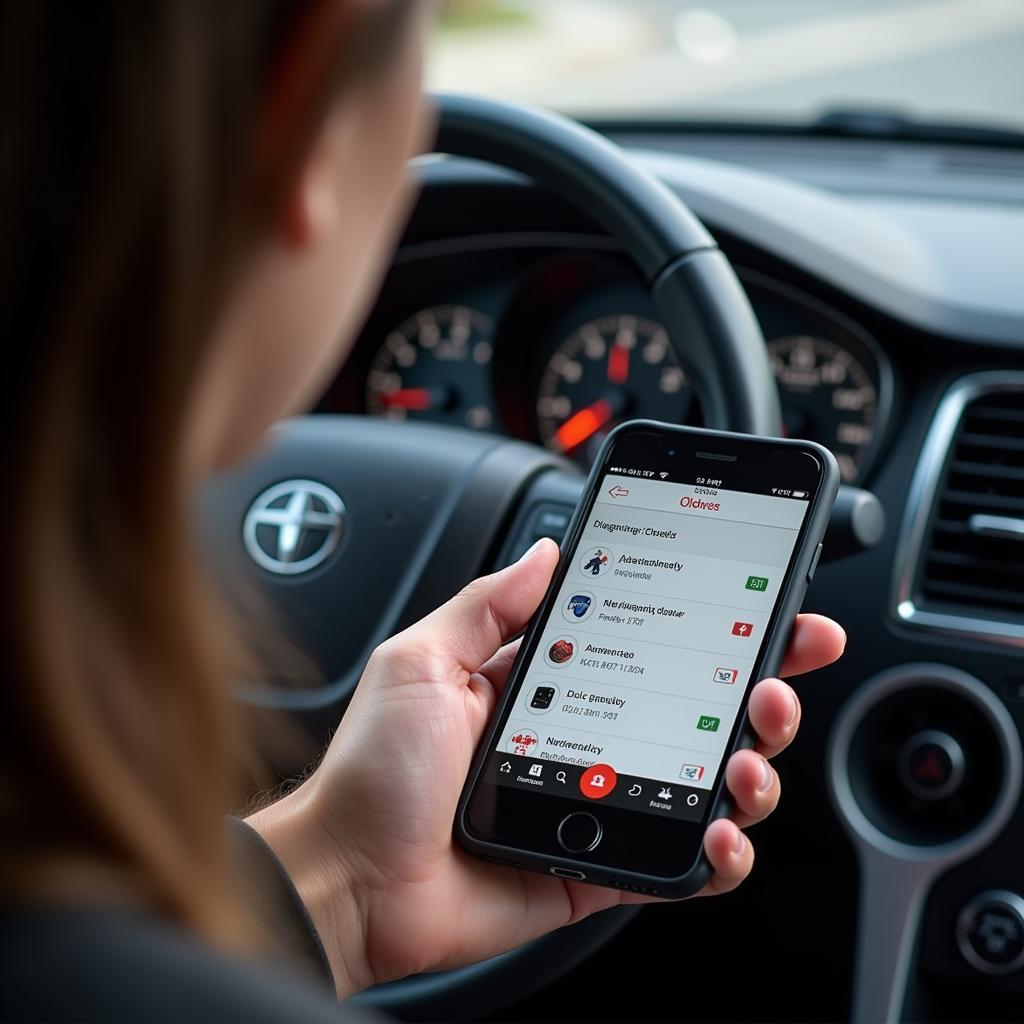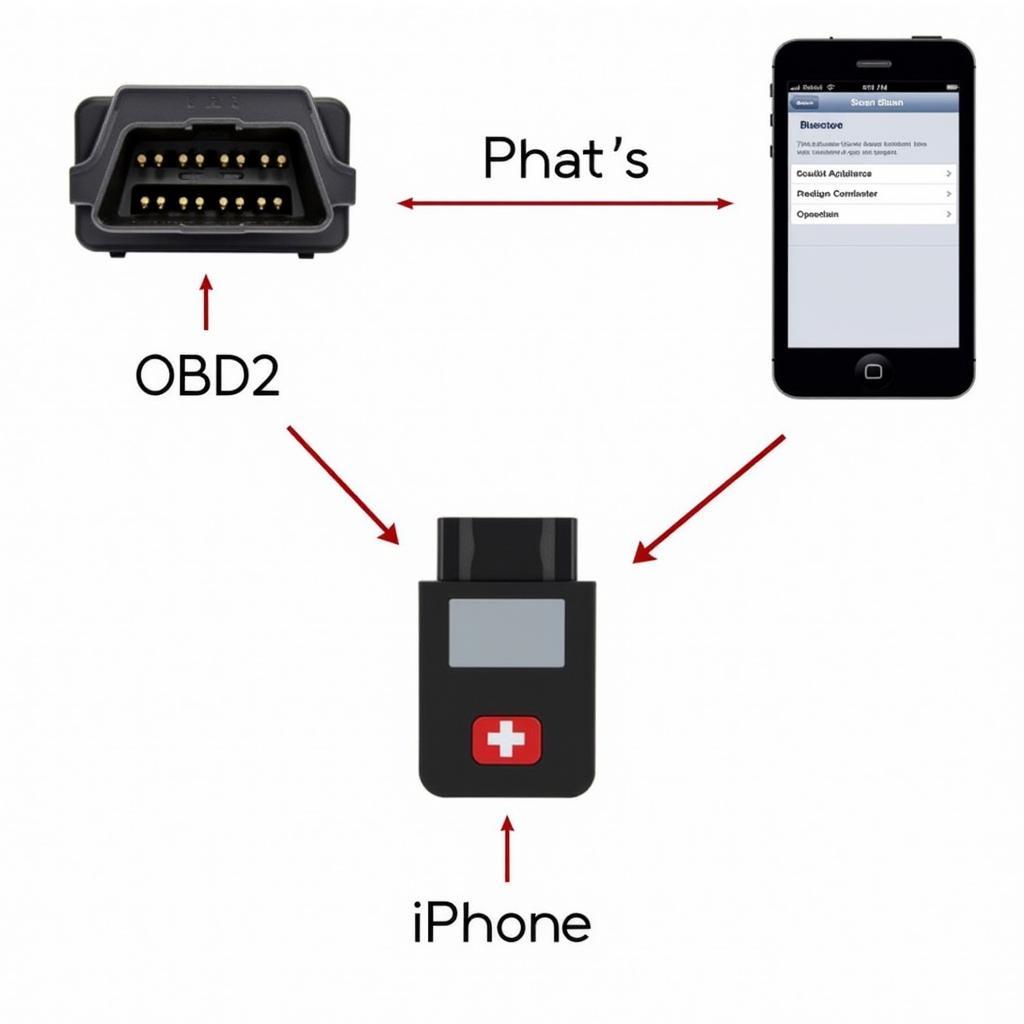A bidirectional scan tool, also known as a professional scan tool, used to be the exclusive domain of experienced mechanics. But with the rise of affordable and user-friendly options, Diy Bidirectional Scan Tools are empowering car owners and DIY enthusiasts to take control of their vehicle diagnostics and repairs. Whether you’re tackling a check engine light, diagnosing complex electrical issues, or even programming new components, this comprehensive guide will delve into everything you need to know about these powerful diagnostic tools.
Why Choose a DIY Bidirectional Scan Tool?
Imagine this – your car starts acting up. You’re not sure what’s wrong, but the dreaded check engine light is staring you in the face. You could take it to a mechanic and brace yourself for a potentially hefty bill, or you could use a DIY bidirectional scan tool to:
- Diagnose Problems Accurately: Pinpoint the root cause of issues instead of relying on guesswork, saving you time and money on unnecessary repairs.
- Perform Advanced Functions: Unlike basic OBD2 scanners, bidirectional scan tools can interact with your car’s systems, allowing you to perform tasks like ABS bleeding, injector coding, and even key fob programming.
- Save Money in the Long Run: Regular maintenance and timely repairs using your own scan tool can prevent minor issues from turning into major (and expensive) headaches.
[image-1|diy-bidirectional-scan-tool-in-use|Mechanic using a DIY bidirectional scan tool to diagnose a car problem|A close-up shot of a mechanic’s hands using a DIY bidirectional scan tool plugged into a car’s OBD2 port. The scan tool displays diagnostic information on its screen, showing the mechanic the car’s error codes and live data.]
Understanding the Power of Bidirectional Communication
The “bidirectional” in bidirectional scan tool is key. Here’s why:
- Unidirectional vs. Bidirectional: A basic OBD2 scanner can only read codes (unidirectional). A bidirectional scan tool can both read and send commands (bidirectional), enabling you to test components and systems.
- Example: Imagine your car’s cooling fan isn’t turning on. A bidirectional scan tool can send a command to activate the fan, helping you determine if the fan itself is faulty or if there’s a problem with the control circuit.
Choosing the Right DIY Bidirectional Scan Tool
Navigating the world of bidirectional car scanner can feel overwhelming. Here’s what to consider:
1. Vehicle Compatibility:
- Make and Model: Ensure the scan tool supports your car’s make, model, and year. Some tools specialize in specific manufacturers, while others offer wider coverage.
- Software Updates: Regular software updates are crucial for compatibility with newer vehicle models and features.
2. Functionality:
- Basic vs. Advanced Features: Determine the features you need, such as code reading/clearing, live data streaming, component activation, adaptations, and programming capabilities.
- Specializations: Some tools excel in specific areas like ABS, SRS, or transmission diagnostics.
3. User Interface:
- Ease of Use: A user-friendly interface with clear menus and intuitive navigation is essential, especially for beginners.
- Display: A large, color display makes it easier to read live data graphs and navigate through menus.
4. Budget:
- Price Range: DIY bidirectional scan tools vary widely in price, from budget-friendly options to professional-grade devices. Consider your needs and how frequently you plan to use the tool.
[image-2|different-types-of-bidirectional-scan-tools|A variety of DIY bidirectional scan tools displayed on a workbench|A workbench with several different models of bidirectional scan tools, highlighting the diversity in size, features, and design available to DIY users.]
5. Additional Features:
- Wireless Connectivity: Some scan tools offer Bluetooth or Wi-Fi connectivity, allowing you to view data on your smartphone or tablet.
- Data Logging: This feature records diagnostic data over time, which can be helpful for identifying intermittent issues.
Getting Started with Your New Diagnostic Powerhouse
Once you’ve chosen your DIY bidirectional scan tool, here’s how to get started:
-
Read the Manual: Yes, it’s tempting to jump right in, but taking the time to understand your specific tool’s functions and interface will save you headaches later.
-
Connect the Tool: Locate your vehicle’s OBD2 port (usually under the dashboard on the driver’s side) and connect the scan tool.
-
Turn on the Ignition: Turn the ignition to the “on” position but don’t start the engine. This allows the scan tool to power up and communicate with your car’s computer.
-
Navigate the Menu: Use the tool’s navigation buttons to access the desired functions. This is where the user interface becomes crucial.
-
Diagnose and Repair: Follow the on-screen prompts to read and clear codes, view live data, or perform specific functions.
Common Uses for DIY Bidirectional Scan Tools
Here are some practical examples of how you can use a bidirectional scan tool:
- Engine Diagnostics: Diagnose check engine lights, analyze engine performance data, and test fuel injectors.
- ABS and Traction Control: Diagnose ABS and traction control system faults, bleed brakes, and monitor wheel speed sensors.
- Airbag (SRS) Systems: Retrieve and clear airbag fault codes, ensuring your safety systems are functioning correctly.
- Transmission Systems: Analyze transmission data, diagnose shifting issues, and even perform adaptations (depending on the vehicle and tool capabilities).
- Body Electronics: Diagnose problems with power windows, door locks, lighting systems, and other electronic components.
[image-3|bidirectional-scan-tool-connected-to-car|A bidirectional scan tool connected to a car’s OBD2 port|A clear image of a bidirectional scan tool properly connected to the OBD2 port of a car. The car’s dashboard is illuminated, indicating that the ignition is on.]
Expert Insight:
“Investing in a pc based bidirectional scan tool was a game-changer for me. It’s like having a mechanic on call 24/7. I’ve been able to diagnose and fix issues myself that would have cost a fortune at the shop.” – John S., DIY Mechanic
DIY Doesn’t Mean Doing it Alone
While a DIY bidirectional scan tool empowers you to take control of your car repairs, remember that it’s not a magic wand.
- Research is Key: Before attempting any repairs, thoroughly research the issue and understand the procedures involved.
- Safety First: Disconnect the battery before working on any electrical components.
- Seek Professional Help When Needed: Some repairs are best left to qualified mechanics, especially those involving safety-critical systems.
Conclusion
A DIY bidirectional scan tool is an invaluable investment for any car owner or DIY enthusiast. By enabling you to accurately diagnose, troubleshoot, and even repair your vehicle, these tools put the power of professional-grade diagnostics in your hands. Remember to choose a tool that aligns with your needs and budget, and always prioritize safety when working on your car.
Need Help Choosing the Right Scan Tool?
Contact ScanToolUS at +1 (641) 206-8880 or visit us at 1615 S Laramie Ave, Cicero, IL 60804, USA. Our team of experts can help you find the perfect bidirectional scan tool for your needs.


